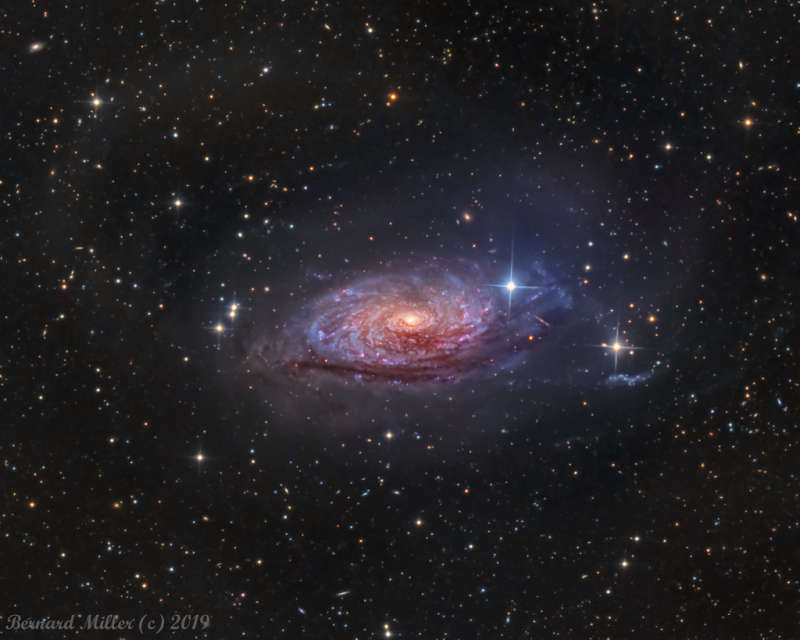
|
Credit & Copyright: Bernard Miller
Explanation:
A bright spiral galaxy of the northern sky,
Messier 63 is about
25 million light-years distant in the loyal constellation
Canes
Venatici.
Also cataloged as NGC 5055, the majestic
island universe
is nearly 100,000 light-years across.
That's about the size
of our own Milky Way Galaxy.
Known by the popular moniker, The Sunflower Galaxy,
M63 sports a bright yellowish core in this
sharp telescopic portrait.
Its sweeping blue spiral arms are streaked with cosmic dust lanes and
dotted with pink star forming regions.
A dominant member of a known
galaxy
group, M63 has faint, extended features that are likely star streams
from tidally disrupted satellite galaxies.
M63 shines across
the electromagnetic spectrum and is thought to have
undergone
bursts of intense star formation.
|
January February March April May June July August September October November December |
| ||||||||||||||||||||||||||||||||||||||||||||||||
NASA Web Site Statements, Warnings, and Disclaimers
NASA Official: Jay Norris. Specific rights apply.
A service of: LHEA at NASA / GSFC
& Michigan Tech. U.
Based on Astronomy Picture
Of the Day
Publications with keywords: spiral galaxy - M 63
Publications with words: spiral galaxy - M 63
See also:
- Portrait of NGC 1055
- APOD: 2025 September 4 Á NGC 4565: Galaxy on Edge
- APOD: 2025 August 22 Á A Tale of Two Nebulae
- APOD: 2025 August 19 Á Giant Galaxies in Pavo
- APOD: 2025 August 18 Á NGC 1309: A Useful Spiral Galaxy
- APOD: 2025 July 4 Á NGC 6946 and NGC 6939
- APOD: 2025 June 30 Á NGC 4651: The Umbrella Galaxy
